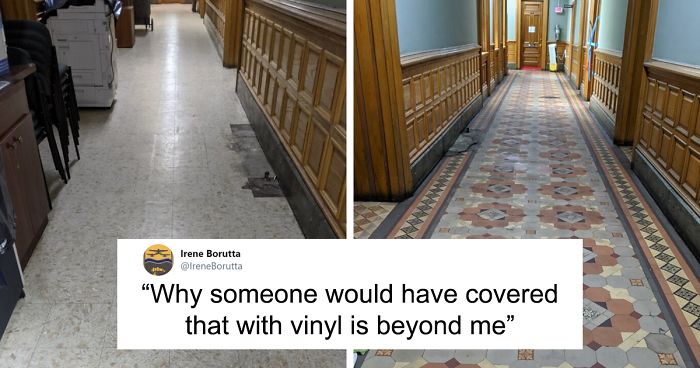
After City Hall Renovation Unveils A Stunning Early 20th Century Tiled Floor, People Start Sharing Their Own Unexpected Discoveries As Well
More info: Twitter
Steven Fulop—the mayor of Jersey City—recently shared a discovery made in the old city hall
Image credits: StevenFulop
“We used Covid-19 shutdown to do projects that would’ve been inconvenient for residents regularly,” the mayor wrote on Twitter. He explained that such projects include street paving, park renovations, and other types of improvements and restorations. “One project was ripping up the 1960s vinyl floor at city hall. We thought we’d find garbage but instead, we found the original from 100 years ago,” Steven Fulop shared.
The city hall is under renovation at the moment
Image credits: jerseycitynj
“The City Hall of Jersey City is an elaborate granite and marble structure of mixed Victorian and Classical architecture,” the web page for New Jersey City University informs. Designed by the architect Lewis H. Broome, the building was completed in 1896.
During it, the builders removed the old vinyl floor
Image credits: StevenFulop
Several renovations have occurred in the hall built back in the 19th century. Firstly, the exterior was changed up in 1955, as the large brass cupolas at the square corners and central towers were removed due to safety concerns. In the late ’70s, contemporary design for the grounds replaced the lawn and shrubs at the front of the building, while a fire a year later destroyed three of the five copper friezes.
Only to reveal the original 100-year-old flooring
Image credits: StevenFulop
The interior was also compromised by the renovations. Stunning original design features were unfortunately painted over. In the ’80s, Anna Cucci, the wife of Mayor Anthony Cucci (1985-1988), wanted to rehabilitate the charm of the building. However, her unexpected death in 1988 halted the project.
The stunning floor design has been hidden for nearly six decades
Image credits: StevenFulop
People on Twitter were glad to see the beautiful discovery at the city hall. However, they found the choice to put grey vinyl flooring over the stunning design mind-boggling, to say the least. “What kind of person thought it appropriate to cover the original floor with vinyl?” one woman tweets. “The same kind of person who thought to put shag carpet over hardwood floors,” someone responded to her.
Twitter account Architecture Revival noted that many architectural ideas of the ’60s were “bad”
Image credits: Arch_Revival_
The Twitter account is dedicated to celebrating classical, rather than modern, architecture. “Create places our ancestors would recognize and our children will be proud of. Beauty and tradition matters,” they write in their Twitter bio.
Many were appalled that such a beautiful accent of the building was hidden away with ugly linoleum
Image credits: polar_stevens
Image credits: TheMikeSchiller
Image credits: BHCatanach
Image credits: IreneBorutta
Image credits: ForagingForever
Other people started sharing their discoveries as well
Image credits: WilberDaForce
Image credits: LadyLaborLawyer
Image credits: bgnolan
Image credits: leftarmdragon
After the mayor’s post went viral, he later shared an update on Facebook
Image credits: Steven Fulop
155Kviews
Share on FacebookI really hope it was just an autocorrect he didn't catch.
Load More Replies...I can see how there would be an issue with replacing damaged tiles. There may not have been any way to replace them by the time they were damaged 50 or 60 years later, so the decision would have been to cover the entire floor with linoleum. For example, in the City Hall picture, a little more than halfway up on the left, it looks like there's a ~1' x 2' area of damaged tiling, and even further up and to the right, it looks like there's a circle of damage there, also. Hopefully it can all be repaired somehow.
I really hope it was just an autocorrect he didn't catch.
Load More Replies...I can see how there would be an issue with replacing damaged tiles. There may not have been any way to replace them by the time they were damaged 50 or 60 years later, so the decision would have been to cover the entire floor with linoleum. For example, in the City Hall picture, a little more than halfway up on the left, it looks like there's a ~1' x 2' area of damaged tiling, and even further up and to the right, it looks like there's a circle of damage there, also. Hopefully it can all be repaired somehow.

 Dark Mode
Dark Mode 

 No fees, cancel anytime
No fees, cancel anytime 






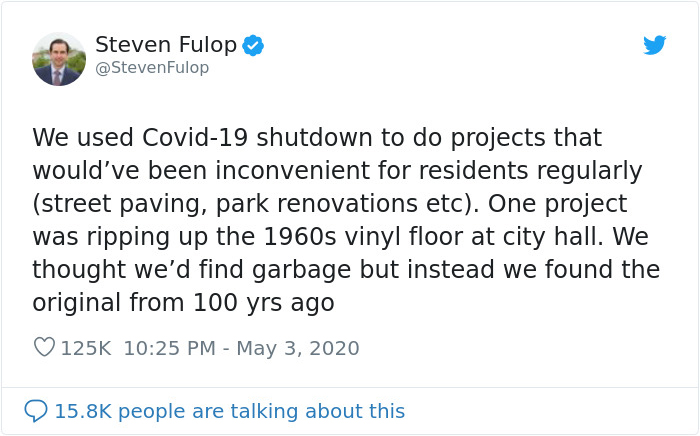

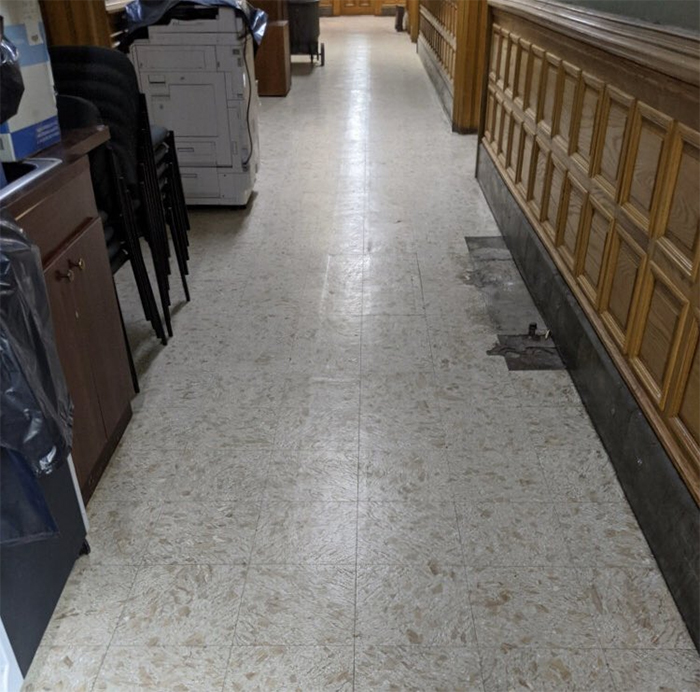

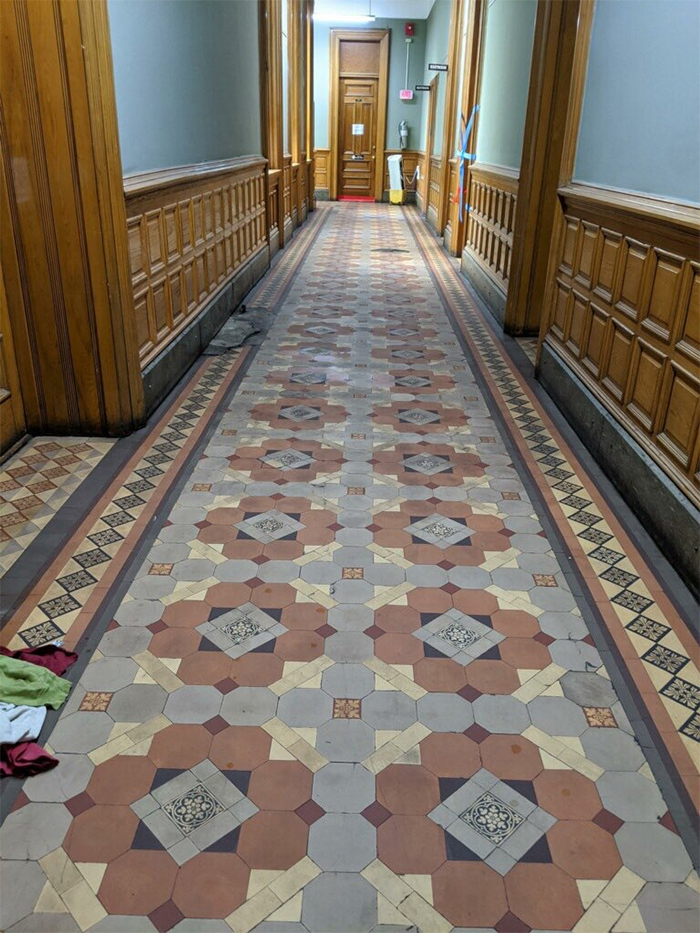
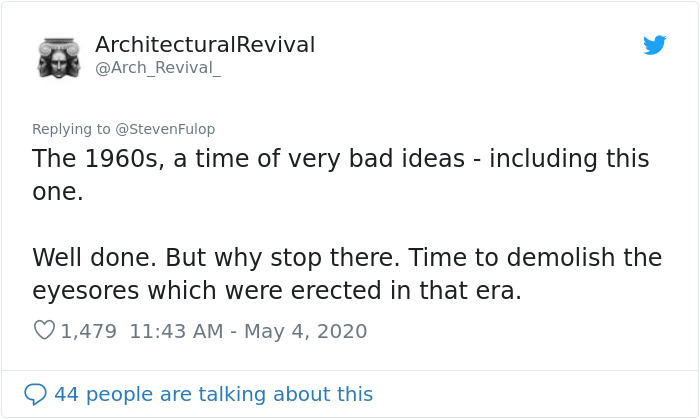
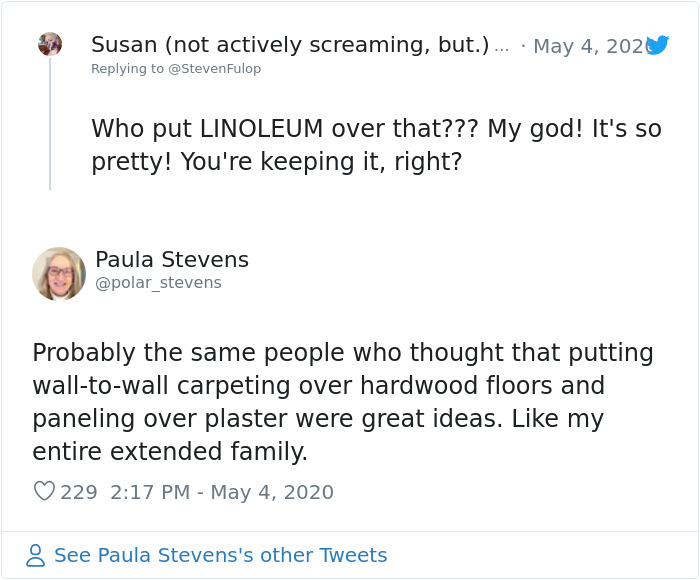
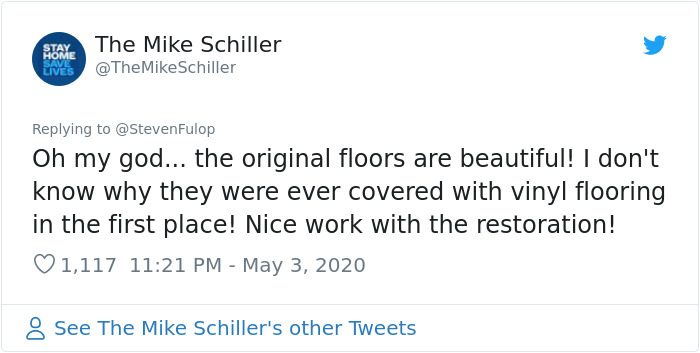

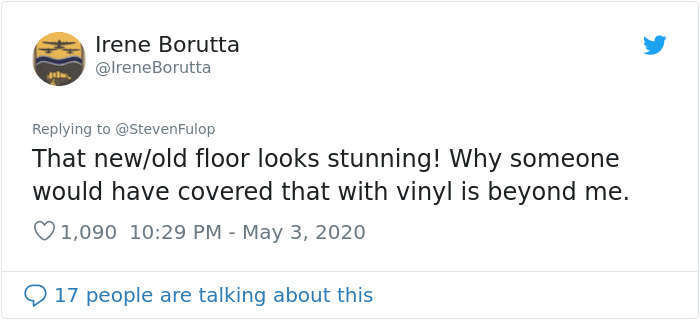
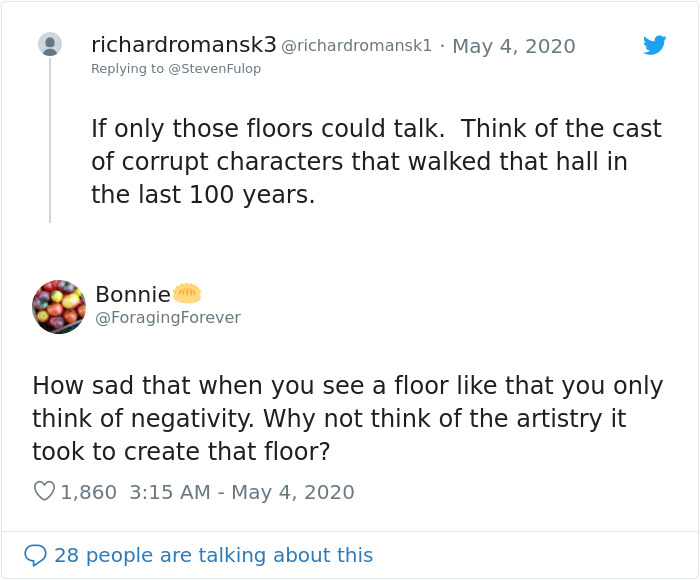
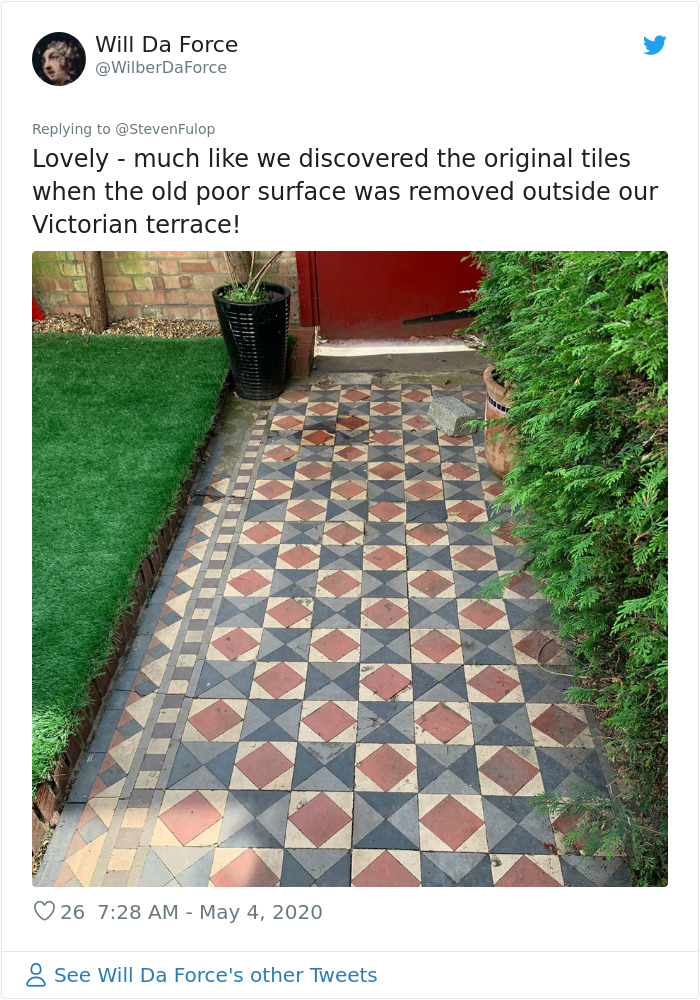
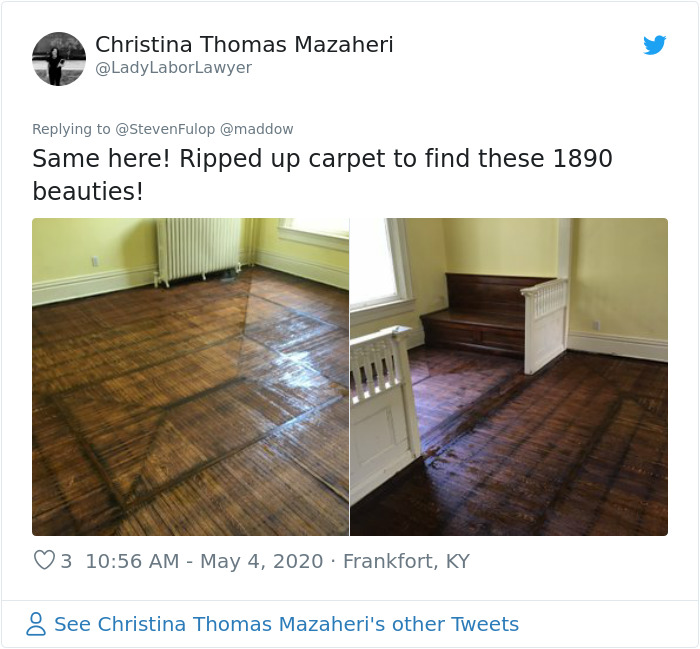
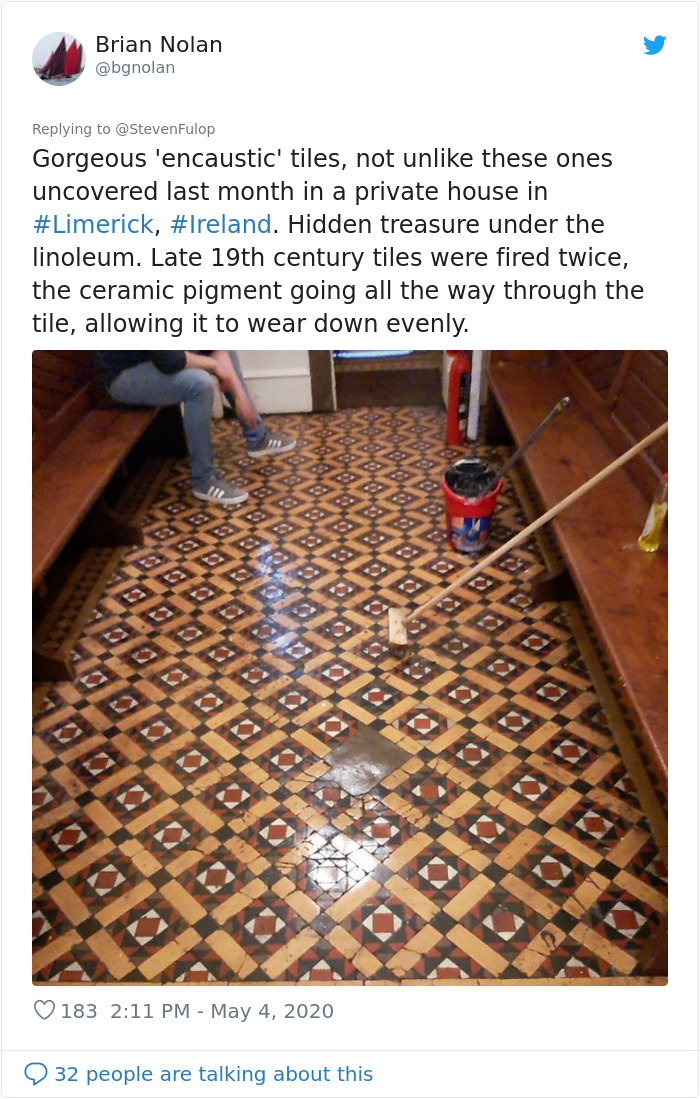
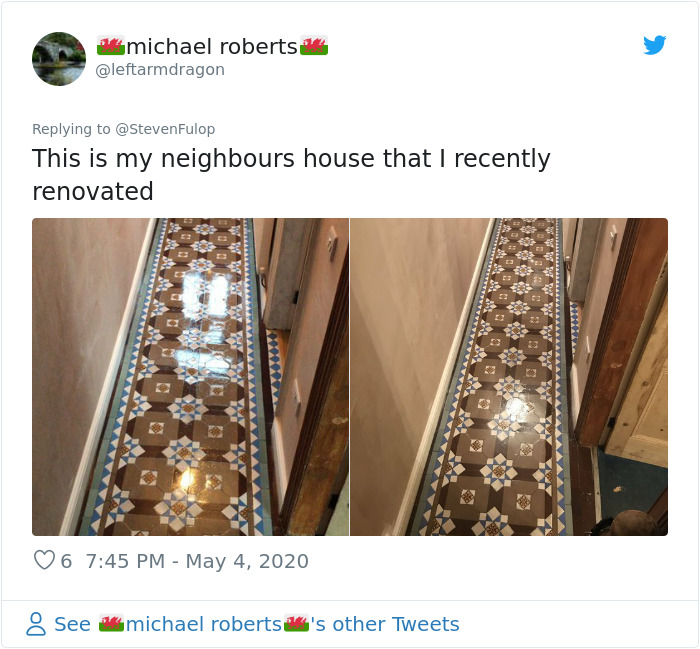
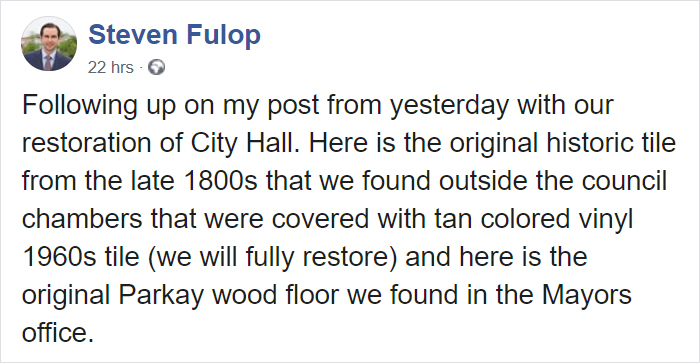
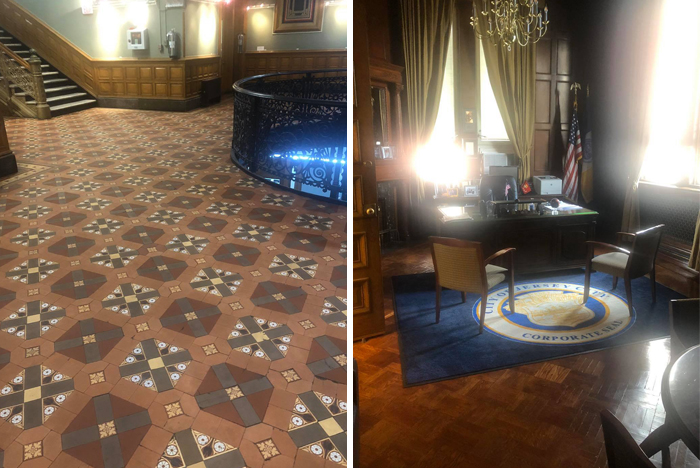











































315
38